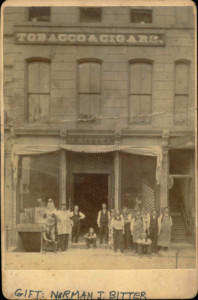
THE RITTER CIGAR FACTORY AND STORE
Ritter Cigar Store (exterior) This early (ca. 1910-1920) image of the Ritter Cigar Store featured a statue of Puck, which was carved from the mast of a sailing ship. Image courtesy of Sandusky Library Archives Research
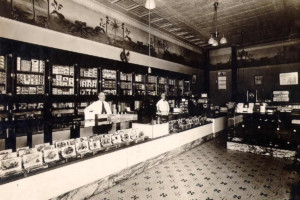
Ritter Cigar Store (interior), vintage, ca. 1875. Image courtesy of Sandusky Library Archives Research Center
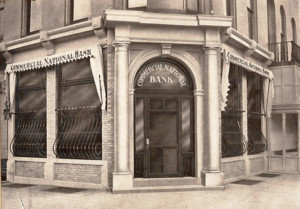
In 1864 Henry Ritter established a cigar factory on the second floor of the northwest corner of Columbus Ave. and W. Market St. above a bank. That bank was the Commercial National Bank. As you can see, the entrance was quite ornate, but the upper floor would comfortably hold the cigar factory.
The Commercial National Bank of Sandusky printed $558,350 worth of national currency. This national bank opened in 1902 and stopped printing money in 1922, which equals a 21 year printing period. That is a fairly normal lifespan for a national bank. During its life, The Bank issued six different types and denominations of national currency.
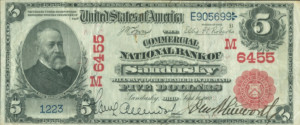
This is a 1902 Red Seal $5 bill has the signatures of the first President and Cashier, Whitworth and Allendorf. This note is one of only two notes from this bank known to survive.
The Ritter Cigar Factory also occupied the building to the north, establishing a retail store on the first floor. The factory eventually employed a foreman and 15 to 25 women for the various tasks needed to make a good cigar. The many-windowed room above the bank was used to dry the tobacco for filler. It was spread on the floor and turned occasionally by a high school boy. High school girls were hired to carefully smooth out the choice large wrapper leaves, which were kept damp. The girls, known as “strippers,” removed the stems and discarded any damaged leaves.
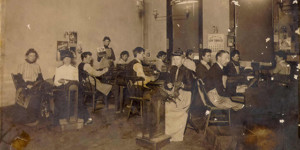
The dried tobacco was adapted to fill a mold of ten cigar shapes each. The molds were then put in a large press. Later the wrappers were skillfully rolled on the molded tobacco by cigar makers whose job it was to make a cigar that would “draw” well. The cigars sold for five to ten cents depending on the quality of tobacco used with the Ritter “Rex” being their most popular brand.
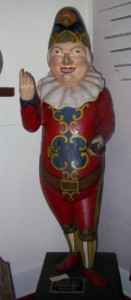
A figure of Punch, carved from a spar of a sailing vessel in New York, was brought to Sandusky by Henry Ritter in 1866. Punch stood outside in front of the cigar store for 73 years. He was mounted on wheels and was taken into the store at night. For years, Punch could be seen in front of the Follett House Museum. Mr. Punch was a large wooden cigar store figure which stood, since 1866, in front of the Ritter Cigar Store on Columbus Ave. It was (so the story goes) carved out of a broken spar of a square rigged sailing vessel by a New York City waterfront wood carver. Henry Ritter brought him to Sandusky to stand in front of the store instead of an Indian figure.
Picture courtesy of the Follett House Museum.
